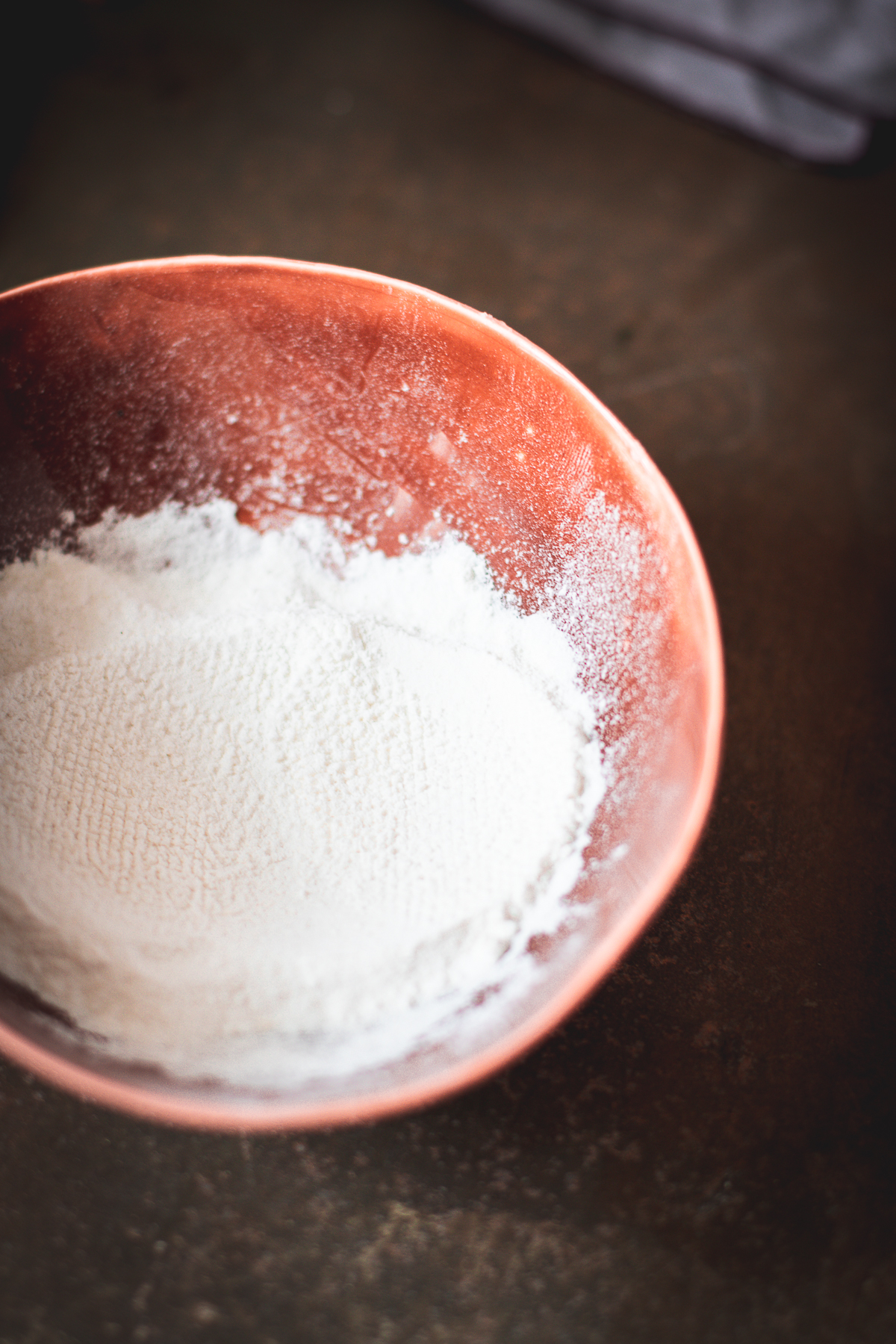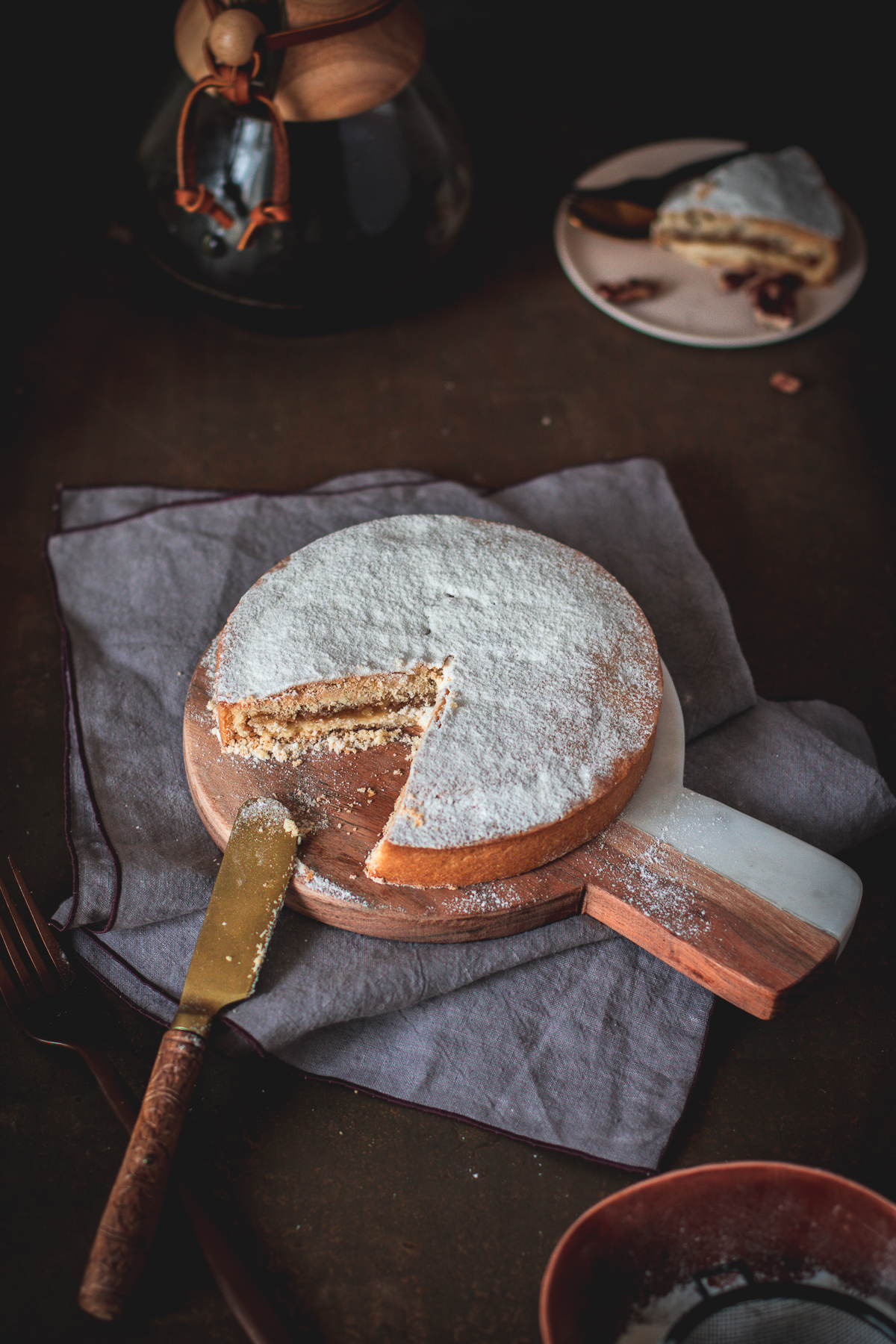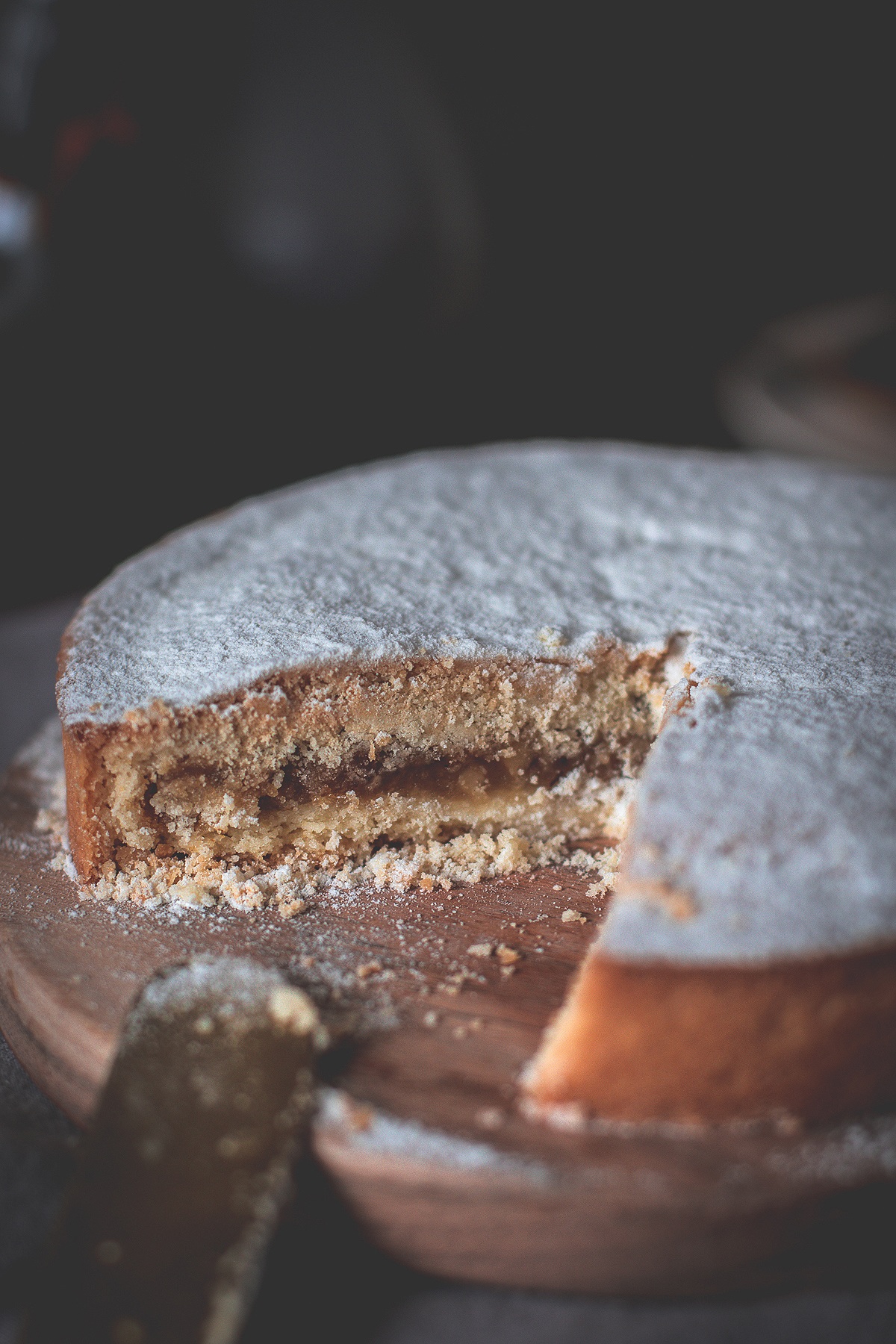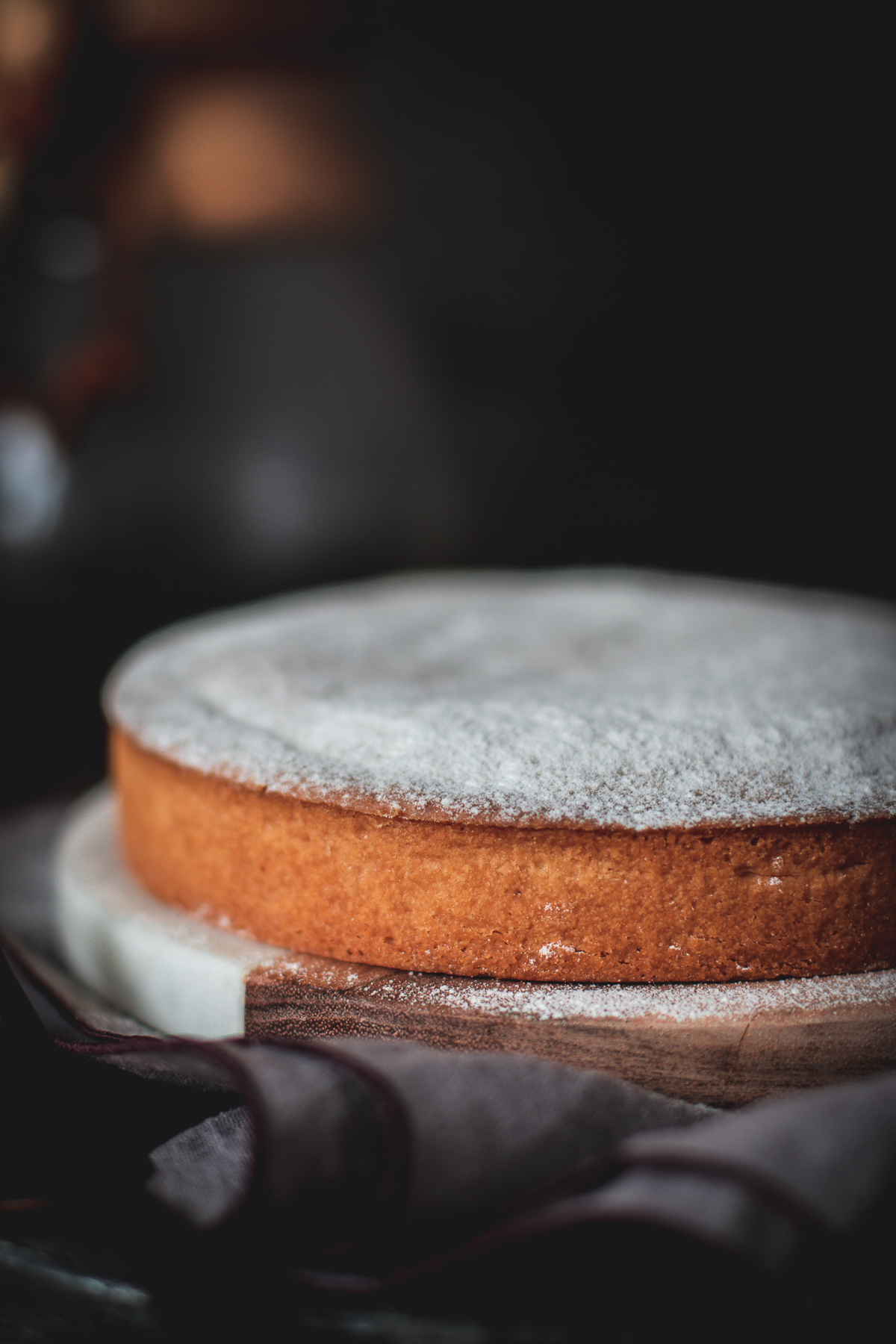THE REAL NUTS/
· Spanish version below ·
Hi there!
Here I come up with a very nice typical Swiss recipe. Although the origin of nuts in their pastries is subject to some debate, it is the filling that is truly memorable: walnuts, honey, caramel and cream. Engadine confectioners who worked in Italy, France and America in the 18th century are said to have brought the recipe home, perfecting it here. Today, Engadine walnut cake is one of the gastronomic icons of Graubünden, a Swiss culinary classic that is exported all over the world.The Bündner Nusstorte is produced throughout the entire canton and is one of the largest export items for independent bakers. It is estimated that Nusstorten sales represent 20 to 40% of the total sales for many bakers and are a major source of income.
Let’s do it together!
Ingredients (Yield 6 to 8 potions) /
Caramel-nut filling/
Caster sugar 150 g
Water 80 ml
Walnuts or pecan nuts chopped 150 g
Heavy cream 200 ml
Honey 1 tbsp
For the crusti dough/
Ice cubes 30g (4 or 5)
Iced water 40 ml
Cider vinegar 5 ml
Pastry flour (or half tapioca flour, half rice flour for GF dough) 275 g
Xanthan gum 20 g (in case of GF dough)
Caster or coconut sugar 2 tablespoons
Salt 1 teaspoon
Cold butter 175 g
Sugar for sprinkling
Process/
For the dough, measure the liquid elements in a large bowl , combine ice, very cold water and a splash of apple cider vinegar. Beat with a fork and transfer to refrigerator to keep cool while working with dry ingredients. With a kitchenaid mixer equipped with kneading instrument or food processor, toss together the flour mix, sugar and salt several times to combine. Add very cold butter cubes. Press several times until the mixture is about the size of a pea. Sprinkle 4 tablespoons of water from the water mixture with ice from step 1. Press until you get a lumpy mass that stays together when pressed with your fingers; if necessary, add up to 2 more tablespoons of water, 1 tablespoon at a time. Be careful not to over-knead or add too much liquid. Carry the dough on a lightly floured work surface. Divide the dough: one part measuring in two thirds , and the other one of a third. Stretch each and roll on a disc. Wrap well in film and refrigerate until firm, at least 1 hour, preferably overnight.
To make the the caramel-nut filling, place the sugar and water in a medium-sized stainless steel saucepan and heat without stirring. Swirl the pan occasionally from side to side, and brush down pan sides with a wet pastry brush if crystals are forming, until caramel has a light brown colour. Remove from the heat and add coarsely chopped walnuts and cream, stir to combine. Be careful as the caramel may splutter and a lot of steam will be created.
Assemble/
Preheat the oven to 200ºC. Remove the biggest disc from the refrigerator and stretch evenly between two pieces of baking paper, until you reach about 27cm in diameter. Use the paper to invert the dough in a 20 cm diameter 3 cm high pastry ring on an oven tray lined with baking paper. Gently press it into the bottom and sides. If the dough breaks, simply squeeze it making as few "patches" as possible, eliminating any excess dough. Refrigerate.
Remove the second disc from the refrigerator and stretch in the same way as the first half of the dough. Working quickly so that it does not take temperature. Roll out the remaining two-thirds of the pastry on a lightly floured piece of baking paper to 30 cm diameter.
If it starts to be difficult to work with the dough, don't hesitate to take it back to the cold. Just keep in mind, gluten-free dough is not as moldable as dough made with wheat flour, so this technique requires some patience and may tend to separate, but it can be joined again, adding a few drops of water to bring moisture.
Allow to cool completely before spreading evenly over the pastry-lined ring or pan.Fold the excess pastry over onto the filling. Brush the folded pastry lightly with water and place on the pre-rolled top, pressing lightly on the edges to seal. Brush gently with eggwash. Go round and press the edges with a fork and lightly prick all over.
Bake for 10 minutes at 180ºC. Lower the temperature to 175ºC and cook for 45 minutes, or until top and edges of the cake turn golden. Leave to cool on a rack completely, or overnight. Cutting it too early can make the filling too liquid, but if this doesn't bother you, it can be cut as soon as the temperature is manageable and safe. Sprinkle with icing sugar. Serve with ice cream or whipped cream!
Safe note!
• Whenever working with caramel, show extra caution because of the intense heat and risk of burns.
--
Hola!
Aquí vengo con una receta suiza muy simple y típica. Aunque el origen de las nueces en la pasteleria es objeto de debate, es el relleno el que es realmente memorable: nueces, miel, caramelo y crema. Se dice que los pasteleros de Engadine que trabajaron en Italia, Francia y América en el siglo XVIII trajeron la receta a casa, perfeccionándola aquí. Hoy en día, el pastel de nueces de Engadine es uno de los iconos gastronómicos de los Grisones, un clásico culinario suizo que se exporta a todo el mundo, y el Bündner Nusstorte se produce en todo el cantón y es uno de los productos de exportación más importantes para los panaderos independientes. Se estima que las ventas de Nusstorten representan entre el 20 y el 40% de las ventas totales de muchos panaderos y son una fuente importante de ingresos. A hornear!
Ingredientes (Rinde de 6 a 8 pociones) /
Relleno caramel & nuts/
Azúcar no refinada 150 g
Agua 80 ml
Nueces pecan o nueces picadas 150 g
Crema entera 200 ml
Miel 1 cda.
Para la masa quebrada crocante/
Cubitos de hielo de 30g (4 o 5)
Agua helada 40 ml
Vinagre de sidra 5 ml
Harina de pastelería (o mitad harina de tapioca, mitad harina de arroz para masa GF) 285 g
Goma xantana 20 g (en caso de masa GF)
2 cucharadas de azúcar de caña o azúcar de coco
1 cucharadita de sal
Manteca fría 175 g
Azúcar impalpable para espolvorear
Procedimiento/
Para la masa, medir los elementos líquidos en un recipiente grande, combinar hielo, agua muy fría y un chorrito de vinagre de sidra de manzana. Batir con un tenedor y transferir al refrigerador para mantenerlo fresco mientras trabajamos con los ingredientes secos. Con una batidora equipada con un instrumento de amasado o un procesador de alimentos, mezclar el harina, azúcar y sal varias veces para combinar. Añadir cubos de manteca muy fríos. Presionar varias veces hasta que la mezcla tenga el tamaño aproximado de una legumbre. Espolvorear 4 cucharadas de agua de la mezcla de agua con hielo del paso 1. Amasar hasta obtener una masa grumosa que se mantiene unida al presionar con los dedos; si es necesario, añadir hasta 2 cucharadas más de agua, 1 cucharada a la vez. Cuidado de no amasar demasiado o añadir demasiado líquido. Llevar la masa sobre una superficie de trabajo ligeramente enharinada. Dividir la masa: por un lado una bola de dos tercios, y la otra de un tercio. Estirar cada uno hasta formar un disco. Envolver bien en film y refrigerar hasta que esté firme, por lo menos 1 hora, preferiblemente toda la noche.
Para hacer el relleno caramel & nuts, colocar el azúcar y el agua en una cacerola de acero inoxidable de tamaño mediano y calentar sin remover. Agitar la sartén de vez en cuando de un lado a otro para evitar que se formen cristales, hasta que el caramelo tenga un color marrón claro. Retirar del fuego y añadir las nueces picadas gruesas y la crema, revolver para combinar. Cuidado, ya que el caramelo puede saltar y se creará mucho vapor.
Armado/
Precalentar el horno a 200ºC. Retirar el disco más grande del refrigerador y estirar uniformemente entre dos trozos de papel de hornear, hasta que alcance unos 27 cm de diámetro. Con el papel invertir la masa en un aro de pastelería de 20 cm de diámetro y 3 cm de altura sobre una bandeja de horno forrada con papel de hornear. Presionar suavemente en la parte inferior y en los lados. Si la masa se rompe, simplemente apretar haciendo el menor número de "parches" posible, eliminando el exceso de masa. Refrigerar.
Retirar el segundo disco del refrigerador y estirar de la misma manera que la primera mitad de la masa. Trabajando rápidamente para que no tome la temperatura. Extender los dos tercios restantes de la masa en un trozo de papel de horno ligeramente enharinado de 30 cm de diámetro.
Si empieza a ser difícil trabajar con la masa, no dude en llevarla de vuelta al frío. Tener en cuenta que la masa sin gluten no es tan moldeable como la masa hecha con harina de trigo, por lo que esta técnica requiere un poco de paciencia y puede tender a separarse, pero se puede unir de nuevo, añadiendo unas gotas de agua para aportar humedad.
Dejar enfriar por completo antes de repartir uniformemente sobre el anillo o la sartén forrada de pasta y doblar el exceso de pasta sobre el relleno. Pincelar ligeramente con eggwash la masa doblada y colocarla en la parte superior enrollada, presionando ligeramente en los bordes para sellarla. Pincelar completamente con eggwash. Dar la vuelta y presionar los bordes con un tenedor y pinchar ligeramente por todas partes.
Hornear durante 10 minutos a 180ºC. Bajar la temperatura a 175ºC y cocinar durante 45 minutos, o hasta que la parte superior y los bordes de la torta estén dorados. Deje enfriar en una rejilla completamente o durante toda la noche. Cortarla demasiado pronto puede hacer que el relleno este aún demasiado líquido, pero si esto no te lo impide puede cortarse tan pronto como la temperatura sea manejable y segura. Espolvorear con azúcar impalpable. Sirva con helado o crema batida!
Nota de seguridad!
- Siempre que trabaje con caramelo, muestre más precaución debido al calor intenso y al riesgo.





